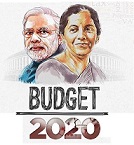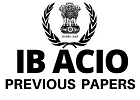sponsored links
- Life certificate is to be obtained from government pensioner, every year in the month of ___________________
- Demat account helps the investors to hold shares/securities in __________________ and to sell / buy such securities without involving any physical movement or transfer of share certificates.
- electronic form
- signals
- current
- magnetism
- None
- In the abbreviation NSDL, the letter D stands for what ?
- Depository
- Due
- Data
- Divine
- Duty
- In the abbreviation CDSL, the letter S stands for what?
- Security
- Services
- Safe
- Surity
- Stength
- What are the advantages of a demat account ?
- It reduces a great extent of work load of a company on transfer of shares and
- It reduces the work load of a company in maintenance of share register
- the account holder can give instructions to the depositary participant to lock up or freeze his account
- individual share holders remain beneficial owners and enjoy the right to vote etc.
- All the above
- Bank lockers should not be rented to
- minors
- individuals
- illiterates
- staff membrs
- resigned bank employees
- Lockers in bank should be allotted on which basis
- first come, first serve basis
- fixed deposit holders only
- Recurring deposit account holders only
- SB account holders only
- None
- Lockers can be given on rental basis for which of the following?
- partnership firms
- companies
- socieities
- government departments , Hindu Undivided Families
- All the above
- Who is empowered to authorize entry and search into any bank locker under Income Tax Act?
- The Commissioner of Income Tax
- Commercial Tax Officer
- District Collector
- District Superintendent of Police
- None of these
- Banks can accept for safe custody, which of the following ?
- Only sealed packets
- shares
- securities
- bank deposit receipts
- All the above
- While renting a locker, the banker's position is that of a __________
- land lord
- bailor
- lesser
- principal
- None of the above
- How can we distinguish the pre- 2005 series banknotes?
- Apart from the additional security features, the 2005 MG series banknotes have the year of printing on the reverse of the notes in the lower middle portion.
- Banknotes printed before 2005 do not have the year of printing on the reverse side and hence can be easily distinguished
- They are made of paper
- Both (1) and (2)
- None of these
- Is there any time limit for exchanging these pre- 2005 notes?
- These notes can be freely exchanged at any bank branch till December 31, 2015
- 31.3.2016
- 1.4.2016
- 1.5.2006
- None of these
- What are the pre-2005 series banknotes issued in India?
- All banknotes issued before the 2005 MG series are called as pre-2005 series banknotes
- only promissory notes
- only cheques
- only demand drafts
- None of these
- Why has RBI decided to withdraw pre- 2005 series banknotes?
- as they have fewer security features as compared to banknotes printed after 2005
- The withdrawal exercise is in confor-mity with the standard international prac-tice of not having multiple series of notes in circulation at the same time.
- The RBI has already been withdrawing these banknotes in a routine manner through banks. It is estimated that the volume of such banknotes (pre-2005) in circulation is not significant enough to impact the general public in a large way
- All the above
- None of these
- Which of the following banknotes issued by Reserve Bank of India shall be legal tender at any place in India in payment or on account for the amount expressed therein, and shall be guaranteed by the Central Government, subject to provisions of sub-section (2) Section 26 of RBI Act, 1934 ?
- Rs.2
- Rs.5
- Rs.10
- Rs.20
- All the above
- What is the meaning of "I promise to pay" clause on the currency notes ?
- This is payable on demand by RBI, being the issuer. The promissory clause printed on the banknotes i.e., "I promise to pay the bearer the sum of Rupees ..." is a statement which means that the banknote is a legal tender for the specified amount.
- I will give whenever you ask
- I will ask some one to give
- I will take for payment
- None
- What was the highest denomination note ever printed by RBI?
- The highest denomination note ever printed by the Reserve Bank of India was the Rs.10000 note in 1938 and again in 1954. These notes were demonetized in 1946 and again in 1978
- Rs.5000
- Rs.1000
- Rs.500
- Rs.100
- What is Indian currency paper made of ?
- Currency paper is composed of cotton and cotton rag
- silk
- woolen
- gold
- silver
- How much value would one get in exchange of soiled banknotes in India ?
- 20%
- Soiled banknotes are exchanged for full value
- 30%
- 40%
- 50%
Read more Banking Awareness Expected Questions from below
- Set 69
- Set 68
- Set 67
- Set 66
- Set 65
- Set 64
- Set 63
- Set 62
- Set 61
- Set 60
- Set 59
- Set 58
- Set 57
- Set 56
- Set 55
- Set 54
- Set 53
- Set 52
- Set 51
- Set 50
- Set 49
- Set 48
- Set 47
- Set 46
- Set 45
- Set 44
- Set 43
- Set 42
- Set 41
- Set 40
- Set 39
- Set 38
- Set 37
- Set 36
- Set 35
- Set 34
- Set 33
- Set 32
- Set 31
- Set 30
- Set 29
- Set 28
- Set 27
- Set 26
- Set 25
- Set 24
- Set 23
- Set 22
- Set 21
- Set 20
- Set 19
- Set 18
- Set 17
- Set 16
- Set 15
- Set 14
- Set 13
- Set 12
- Set 11
- Set 10
- Set 9
- Set 8
- Set 7
- Set 6
- Set 5
- Set 4
- Set 3
- Set 2
- Set 1
sponsored links










 English Vocabulary from
English Vocabulary from










0 Responses:
Post a Comment